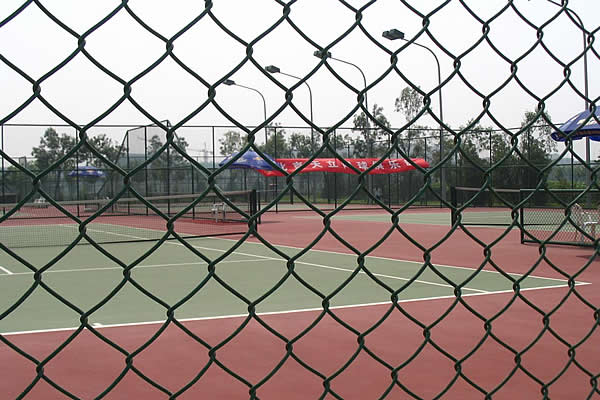 TEL:
+86-13102802206
TEL:
+86-13102802206
 Email:
fencenetting@china.com
Email:
fencenetting@china.com
 Language
Language
 TEL:
+86-13102802206
TEL:
+86-13102802206
 Email:
fencenetting@china.com
Email:
fencenetting@china.com
 Language
Language


The Importance of Temporary Construction Fencing in Modern Construction Projects
In the world of construction, safety and security are paramount. As urban areas expand and new buildings rise, the need for effective barriers becomes evident. Temporary construction fencing is an essential element that facilitates safety, security, and efficiency on construction sites, and its importance cannot be overstated.
What is Temporary Construction Fencing?
Temporary construction fencing refers to portable barriers set up around construction sites to delineate boundaries. These barriers help manage access, ensuring that only authorized personnel can enter the site. Typically made of chain link, plastic, or metal, these fences can be quickly installed and removed, making them ideal for projects that may vary in duration.
Safety First
The primary role of temporary construction fencing is to promote safety. Construction sites can be hazardous environments, filled with heavy machinery, tools, and materials that pose risks not only to workers but also to the public. By establishing a visible barrier, construction fencing significantly reduces the likelihood of unauthorized access to these potentially dangerous areas. This separation is especially crucial in urban settings where pedestrians and nearby residents may accidentally wander onto hazardous sites.
Securing the Site
Beyond safety, temporary construction fencing serves as a deterrent against theft and vandalism. Construction materials, equipment, and tools can be quite valuable, making them prime targets for theft. An adequately installed fence can discourage opportunistic thieves who may otherwise take advantage of an unprotected site. Additionally, many construction fences come with features such as locking mechanisms or the ability to be combined with security cameras, further enhancing site security.
Defining Boundaries
Temporary fencing also plays a vital role in defining the boundaries of a construction site. This is particularly important in densely populated areas where property lines may be unclear. By marking the perimeter, construction fencing helps avoid disputes with neighbors and minimizes the risk of encroaching on private property. Clearly delineated boundaries make it easier for workers to navigate the site, ensuring that operations proceed smoothly and efficiently.

Aesthetic Considerations
While the primary functions of temporary construction fencing revolve around safety and security, there is also an aesthetic component to consider. Construction projects can be unsightly, and a poorly marked site can contribute to a negative perception of the area. Companies can use branded fencing to enhance visual appeal. Graphics and logos displayed on temporary fencing not only serve as an advertising opportunity but also help foster a positive image of the construction project in the eyes of the community.
Compliance with Regulations
In many regions, local regulations mandate the installation of temporary fencing around construction sites. Compliance with these regulations is essential not only for avoiding fines but also for maintaining a good relationship with the community. Failing to secure a site can lead to legal issues, particularly if accidents occur involving unauthorized individuals. Investing in proper fencing can prevent unforeseen complications down the line.
The Flexibility of Temporary Fencing
One of the advantages of temporary construction fencing is its flexibility. Projects often change scope, and circumstances can arise that require rapid adjustment. Unlike permanent fences, temporary solutions can be easily modified, repositioned, or even removed based on the current needs of the site. This adaptability allows construction teams to respond to challenges swiftly, keeping projects on schedule.
Environmental Considerations
As the construction industry moves towards more sustainable practices, the option to use eco-friendly materials in temporary fencing is becoming increasingly available. Lightweight, recyclable options reduce waste and minimize environmental impact, aligning with the growing trend of sustainable construction practices.
Conclusion
Temporary construction fencing is more than just a physical barrier. It embodies safety, security, efficiency, and compliance in the construction industry. As urban landscapes continue to evolve, the role of temporary fencing will only grow more critical. By providing safety for workers and the public, preventing theft and vandalism, defining boundaries, and ensuring compliance with regulations, temporary construction fencing stands as an indispensable feature of modern construction projects. Investing in quality fencing is not merely a convenience but a necessity to ensure the success and integrity of construction efforts in today's bustling world.